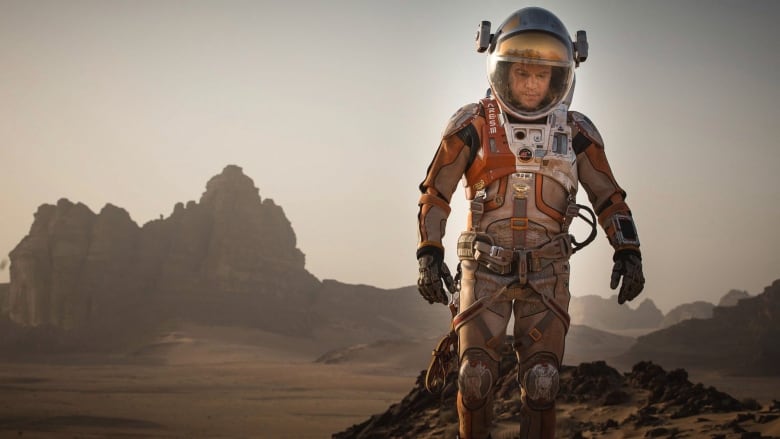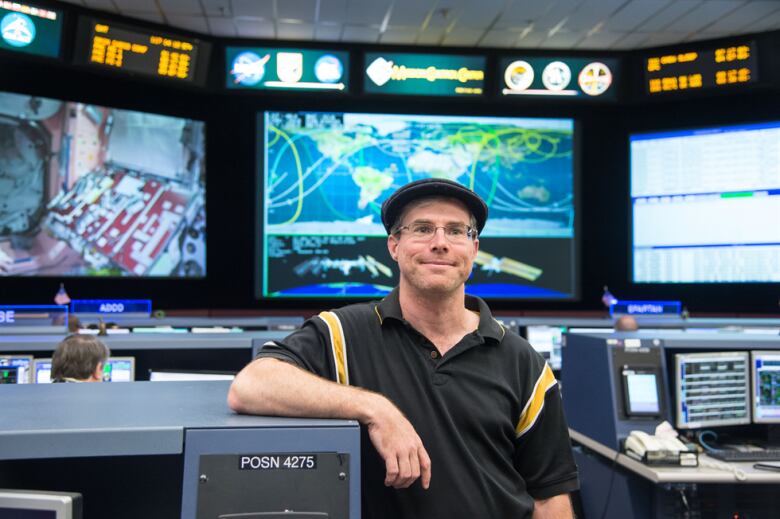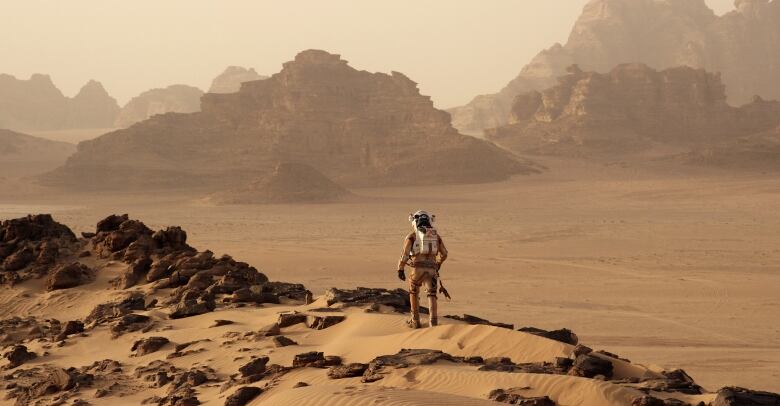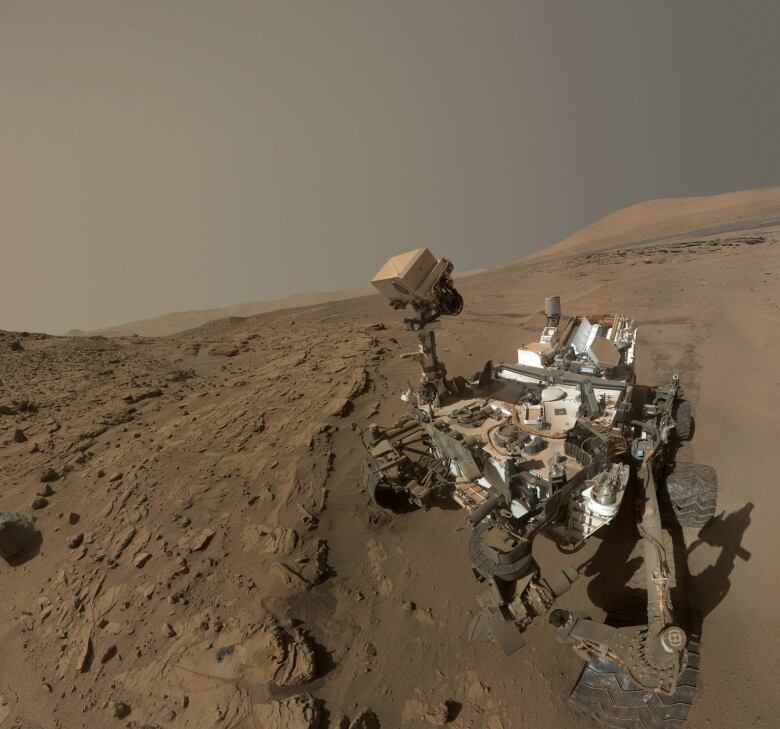TIFF 2015: The Martian gives intimate view of Mars, today's space technology
Science and technology are Matt Damon's biggest co-stars in Ridley Scott's latest sci-fi film

If you were stranded alone on Mars with hardly any food, oxygen, water and a limited supply of space technology and duct tape, what would you need to do to survive?
"I'm going to have to science the shit out of this," concludes astronaut Mark Watney, played by Matt Damon, in The Martian, when confronted by yet more attempts by the Red Planet to kill him.
- Mars One plan has potentially deadly flaws, scientists say
- Mars mission at Canadian space simulator gives taste of astronaut life
In the latest film from producer and director Ridley Scott (Alien, Blade Runner, Gladiator), set in 2035, Watney is part of the third manned mission to Mars. He's left behind by his five crew-mates, who think he's dead, when they blast off and escape from Mars during a violent windstorm.
The movie is based on a bestselling novel by Andy Weir, whose goal was to write a story about a manned mission to Mars using today's technology "no made up stuff," he told CBC News in an interview following the film's world premiere at the Toronto International Film Festival this weekend.

Weir, a computer programmer, imagined what would happen if things went wrong: "What if all these things break?"
That's the problem that Watney is confronted with left wounded, with no way of communicating with Earth, no ship to leave on and food supplies that can't possibly last until the earliest potential rescue years from now, the botanist-engineer-astronaut relies on science to help him hack togetherthe resources he needs from the limited supplies at hand.
Almost every solution goes wrong the first time (growing potatoes from human feces on Mars is a lot more complicated than you might think), resulting in explosions and other disasters. But the wisecracking Watney's sense of humour and his will to "science up" a way to survive are unflagging, driving the story forward, albeit in a rather predictable way.
A new view of Mars
Along the way, the viewer gets an intimate view of Mars as you've never seen it. Scott's trademark sweeping panoramas feature Watney looking tiny against red landscapes with soaring cliffs and rock formations, a giant volcano and skies decorated with funnel clouds (filmed in Jordan, with special effects added).
Most closeups of Mars we've seen have been the ground-level perspective of NASA's rovers.
Scott calls that "boring, flat, reddish ground." He aimed to show more dramatic parts of Mars's topography from a different perspective based on high-resolution images taken by satellites orbiting Mars.

Anyone who has read Weir's book will find the movie makes them aware of how visually sparse the book is, which Weir says is deliberate ("Who wants to read about what a mountain range looks like?"). In a sense, it fills in some of the gaps in the book (but not all of them we ultimately find out very little about the characters in either the book or the movie, Watney included).
Some of the visualizations especially the huge spaceship Hermes, designed to shuttle astronauts between Earth and Mars surprised even Weir.
"Hermes doesn't look anything like I imagined but it's awesome," he said.
Subtle science

"Everything is scientifically accurate," Weir said. "They just don't bother to explain it to you, which is good because otherwise it would be very boring."
When introducing the film at TIFF, Scott called it "particularly complex on paper."
The zero-gravity sequences were the hardest to pull off, Scott said, partly because of the cumbersome computer control required "people on wires are a pain in the ass."
Hollywood dust storm
Jim Green, director for planetary science at NASA the real-life counterpart of the film's Vincent Kapoor, played by Chiwetel Ejiofor said the biggest scientific inaccuracy in the movie is the dark, raging dust storm that opens the movie.

"We never have anything like that on Mars today," Green said. While there are hurricane-speed winds on Mars, the atmosphere is so thin that they can't apply much force. "It's not enough to straighten an American flag" let alone tip over a spacecraft as it nearly does in the movie.
Scott shrugs at that. "What the hell?" he says. "It's a movie."
I was quite surprised to learn that some of the technology described in The Martianis as close to reality as it is:
- The ion engine technology that powers Hermes will power an unmanned spaceship that is expected to launch during the 2020s, NASA'sGreen says. The ship will be part of NASA's "asteroid redirect mission" to pull a multi-tonne boulder off an asteroid and bring it into stable orbit around the moon for astronauts to explore.
- The radioisotope thermoelectric generator the plutonium-filled heat and power source that plays a big role in the story is what powers the electrical systems of the Curiosity rover that is already on Mars.
- An oxygenator that pulls carbon dioxide out of Mars's atmosphere and converts it into breathable oxygen, similar to the one in the Hab (Watney's home on the Red Planet), will head to Mars aboard the Mars 2020 rover in just five years for testing.
In fact, Weir says, some of the challenges that Watney experiences could be solved by the latest technology today, six years after he started writing the book.
For example, Watney relies on filters in his space suit to remove the carbon dioxide he breathes out and stop him from suffocating, but those can only absorb a limited amount of carbon dioxide before they stop working. NASA recently developed a new system that doesn't have such limitations.
"The Martian takes place in 2035," Weir said. "It's 2015, and already those canisters are outdated technology."
The Martian opens in theatres Oct. 2.












_(720p).jpg)


 OFFICIAL HD MUSIC VIDEO.jpg)
.jpg)



























































































